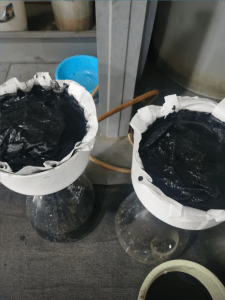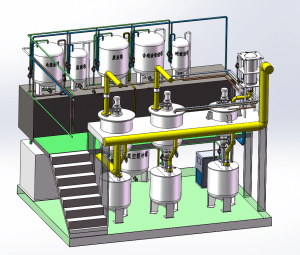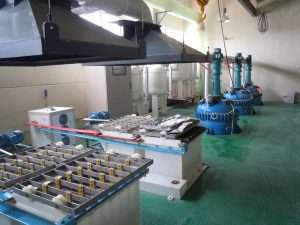Call us now:
Refining silver with sulfuric acid involves a process known as cupellation. Cupellation is a technique that has been used for centuries to refine precious metals, particularly silver and gold.
Here's a brief overview of the cupellation process:
The first step is to melt the silver-containing material (such as ore or scrap) in a crucible.
Once the material has melted, add lead to it. The lead will combine with any impurities in the silver and form a layer of slag on the surface of the molten metal.
Pour the molten metal into a cupel, which is a small, shallow, porous container made of bone ash.
Place the cupel into a furnace and heat it to a temperature of around 1,100°C (2,012°F). This will cause the lead to oxidize and form lead oxide, which will be absorbed by the porous bone ash of the cupel. The silver will remain in the cupel in a pure form.
Once the cupellation process is complete, remove the cupel from the furnace and allow it to cool. The silver can then be removed from the cupel and further refined if necessary.
Sulfuric acid is not typically used in the cupellation process for refining silver. However, it can be used in other processes for refining silver, such as the Parkes process, which involves adding zinc to the molten silver to form zinc-silver alloy, and then using sulfuric acid to dissolve the zinc and leave behind pure silver.
In the Parkes process, the silver-containing material is first melted and mixed with a small amount of zinc. The zinc combines with the silver to form a zinc-silver alloy, which has a lower melting point than pure silver.
The zinc-silver alloy is then allowed to solidify and is crushed into small pieces. The pieces are placed in a container along with sulfuric acid and stirred to dissolve the zinc. The acid reacts with the zinc, forming zinc sulfate and releasing hydrogen gas.
The undissolved silver is then filtered out and washed with water to remove any remaining zinc sulfate. The silver can then be further refined through other processes, such as electrolysis or precipitation.
It is important to note that refining silver with sulfuric acid can be dangerous and should only be done with proper safety equipment and precautions. Sulfuric acid is a highly corrosive substance that can cause severe burns if it comes into contact with the skin. It also produces toxic fumes when it reacts with certain materials.


